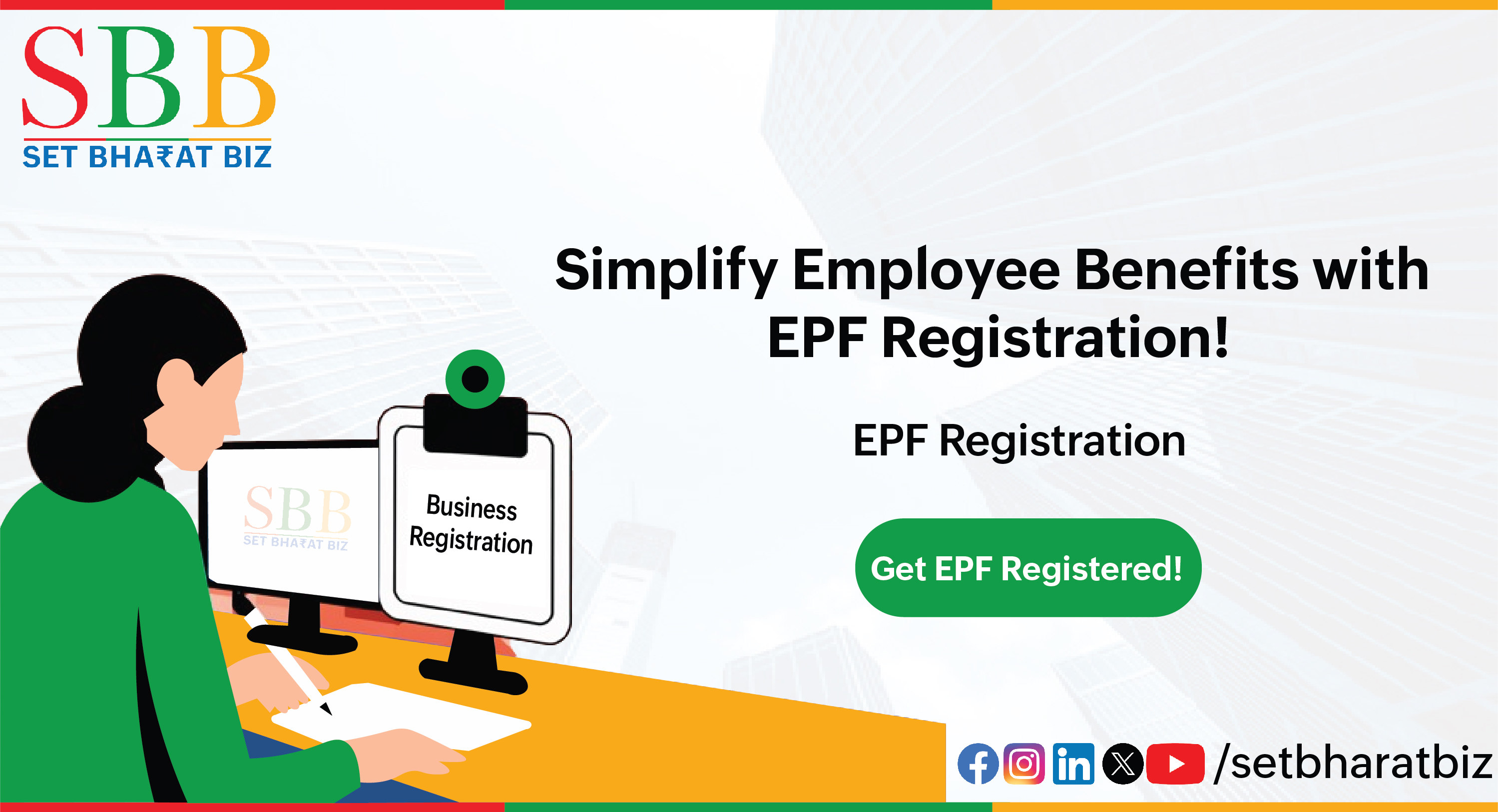
Free Consultation by Expert
Many thanks to Setbharatbiz. We had an excellent experience working with its expert. They have a strong sense of professionalism when dealing with clients.
Mudassir CEO, Twinfinty DigiTech SolutionsWe would recommend Setbharatbiz incorporation services to any founder without a second doubt. The process was beyond efficient and shows Setbharatbiz founder's vision
Nagasrinivas Director,Prakash Nagasrinivas & Saradhy AssociatesI was searching for a company for assistance in the incorporation services. Then one of my friend tell me about Setbharatbiz and definitely the Setbharatbiz is the best.
Prakash Kakani Director, PNS EV HubOverview
EPF (Employees' Provident Fund) Registration
The Employees' Provident Fund (EPF) is a government-managed retirement savings scheme governed by the Employees' Provident Fund and Miscellaneous Provisions Act, 1952. It is managed by the Employees' Provident Fund Organization (EPFO) and is mandatory for establishments with 20 or more employees. The EPF scheme provides financial security by encouraging both employees and employers to contribute a percentage of the employee's salary to a fund, which is accessible upon retirement, resignation, or in specific situations
Why EPF Registration is Important
1. Legal Compliance: Mandatory for eligible establishments, ensuring adherence to labor laws.
2. Employee Financial Security: Promotes retirement savings for employees, providing financial support post-retirement.
3. Employer Contributions: Helps employees accumulate a sizable corpus, supported by employer contributions.
4. Insurance Coverage: Includes a life insurance benefit (under the Employees' Deposit Linked Insurance Scheme - EDLI).
5. Tax Benefits: Contributions to EPF are eligible for tax deductions under Section 80C of the Income Tax Act.
Applicability
- Businesses with 20 or More Employees: Mandatory EPF registration is required.
- Voluntary Registration: Organizations with fewer than 20 employees can voluntarily register for EPF.
- Applicable to Specific Employees: Employees earning a salary of up to ₹15,000 per month are automatically eligible for EPF. Higher-earning employees can opt to participate voluntarily.
Compliance Requirements
- Employer Contribution: Employers contribute 12% of an employee’s basic salary plus dearness allowance to EPF.
- Employee Contribution: Employees also contribute 12% of their basic salary and dearness allowance.
- Monthly EPF Filings: Employers must file monthly EPF returns and remit the contributions to EPFO by the 15th of each month.
- Annual Returns: An annual return must be submitted by April 30 each year to provide a summary of contributions and employees covered.
Documents Required
For EPF Registration of Employers
Features
Features & Benefits EPF (Employees' Provident Fund) Registration
Employers Contributions
Pension Scheme
Insurance Coverage
Tax-Free Returns
EPF (Employees' Provident Fund) Registration
Withdrawal Benefits
Interest Accumulation
Portability
Voluntary Contribution Option
Financial Security for Family
Comparison of EPF vs. Non-EPF Registered Benefits
| Feature | EPF Registered Employees | Non-Registered Employees |
|---|---|---|
| Retirement Savings | Mandatory savings by both parties | Relies on other savings options |
| Employer Contributions | Yes (12%) | No employer obligation |
| Insurance Coverage | EDLI coverage up to ₹7 lakh | Not applicable |
| Pension Benefits | Monthly pension under EPS | No pension benefit |
| Tax-Free Interest | Yes | Depends on other savings |
| Withdrawal Benefits | Partial withdrawal permitted | No such provision |
| Portability | Portable with UAN | Not applicable |
Frequently Asked Questions
Is EPF registration mandatory for all companies?
EPF registration is mandatory for establishments with 20 or more employees. Smaller companies can voluntarily opt for EPF registration.
EPF registration is mandatory for establishments with 20 or more employees. Smaller companies can voluntarily opt for EPF registration.
What is the current interest rate on EPF?
The EPF interest rate is declared annually by the government. As of the latest notification, it stands at around 8-8.5%.
How much do employees and employers contribute to EPF?
Both employee and employer contribute 12% of the employee’s basic salary and dearness allowance. A portion of the employer’s contribution also funds the EPS (Employee Pension Scheme).
Can EPF be withdrawn before retirement?
Partial withdrawals are allowed for specific reasons like medical emergencies, marriage, education, or home purchase. Full withdrawal is permitted under certain conditions, such as retirement or job termination.
What is the Universal Account Number (UAN)?
UAN is a unique, portable EPF account number assigned to each member, allowing them to maintain the same account across multiple jobs.
Is EPF contribution tax-deductible?
Yes, EPF contributions are eligible for deductions under Section 80C of the Income Tax Act, and the interest earned is also tax-exempt up to specified limits.
What happens to the EPF balance after retirement?
After retirement, employees can withdraw the EPF balance or retain it for continued interest accumulation if they do not withdraw it immediately.

